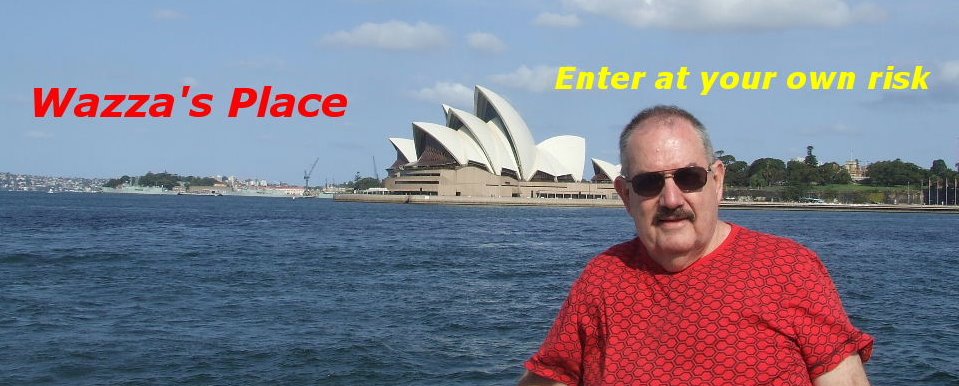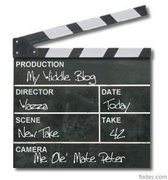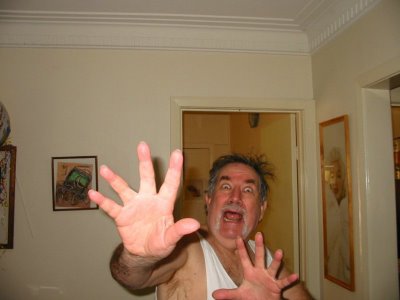Brisbane's Trams and Trolleybuses, A Bygone Era
I was born in 1944 in
 There was another tram we could catch but that was nearly 2 kilometers (nearly 1.2 miles) away, so most times we caught the closer tram. Then in 1955 the tram line that was 2 kilometers away was converted into a trolleybus line. Thirteen months later the trolleybus line was extended and this new line finished at a new terminus at the top of our street.
There was another tram we could catch but that was nearly 2 kilometers (nearly 1.2 miles) away, so most times we caught the closer tram. Then in 1955 the tram line that was 2 kilometers away was converted into a trolleybus line. Thirteen months later the trolleybus line was extended and this new line finished at a new terminus at the top of our street.
This is what our house looked like in the early 1950’s.
Before the suburbs were sewerage all houses had a dunny (outhouse) at the back of the house. I have marked the next doors dunny in the photo. The next photo shows a row of houses all with dunnys at the back of each house.
 The family home 1997 prior to my Mother having to go into a Nursing Home.
The family home 1997 prior to my Mother having to go into a Nursing Home.
Victoria Bridge era 1906.....................Stanley Street era 1898.
A restored 1901 tram at the Brisbane Tramway Museum.
In 1923 the tramways were brought under one management, the
 ..........................................The Dropcentre Tram.
..........................................The Dropcentre Tram.
This was the last design of tram for use in
.................................The FM Tram.
By 1952, the network had expanded to 109 route kilometres (199 km of track). Ten years later,
...................The Bench Tram era 1910.
The conductors on these trams had to walk along the side platform to collect fares from the passengers. When it rained a canvas sheet could be dropped down. I’m not sure how the conductor collected the fares during rainy conditions, but no doubt it would have been one heck of a job.
 My father worked as a conductor on the trams (that's Dad on far right).
My father worked as a conductor on the trams (that's Dad on far right).
Urban development, often well away from public transport, the rise of suburban shopping centres and the relative decline in the cost of motorcars meant that as elsewhere, Brisbane's public street transport system increasingly had to compete with the private motor car and patronage slowly declined from a post war peak of 148,000,000 passenger journeys in 1946, to approximately 64,000,000 passenger journeys in 1968.
 ....................Cnr Queen and Adelaide Street era 1947.
....................Cnr Queen and Adelaide Street era 1947.
Trams on the Victoria Bridge.......................and in Queen Street.
The Paddington tram depot in
It is believed that the fire started in a storage area underneath the depot, although the cause has never been fully determined. Around

Some of the trams at the Paddington Tram Depot.
The loss of so many trams put considerable strain on the Brisbane City Council Transport Department. Initially older-style trams were brought out of storage from other depots to assist with peak-hour demand, but in December 1962 three tram services were converted to diesel bus operation. These closures were the first significant route closures of the system and within 6½ years, the remainder of
 One of the Dreadnought Trams passing the Princess Alexandria Hospital.
One of the Dreadnought Trams passing the Princess Alexandria Hospital.
The destruction of the depot is generally seen as the beginning of the end for Brisbane's tram system, providing the justification for the subsequent closure of four tram routes, the gradual encroachment of bus operation on other tram routes with the final closure of the tram system occurring on 13 April 1969.
 The last tram to run on 13th April, 1969 with special guest passengers.
The last tram to run on 13th April, 1969 with special guest passengers.
I went out to the Brisbane Tramway Museum two weeks ago to do some research and take some photos and video. On the next post I will finish up with the story and photos of the museum. I also purchased a book on the trolleybus service in Brisbane, so I will also conclude with the story and photos of the trolleybus.

















11 comments:
Wazza ~ WOW was that ever a trip down memory lane for me too. By “Trains, Planes and Automobiles?” I was glad you included the dunny (outhouse) explanation too. I actually thought that is what it meant, but was NOT positive. My grandparents’ farm is the only place I remember having ant out house though. I can remember when I was about 4-5 years old being chased by a goose every time I RAN for the outhouse. I am still not a big fan of GEESE even today! ~ Nice post. I loved Brisbane by the way! ~ jb///
Hi Wazza, yet another well researched and interesting post, there was a lot of stuff in there that I knew nothing about including the single rail trams.
Hi Warren.
Loved the photo of the houses with all the dunnies out the back!
Trams and trolley buses...what a trip down memory lane...wonderful post, Warren. Thanks.
Great post and pictures, Wazza. I was living in Brisbane when the trams stopped. And now they on their way back again.
Hi Warren ~~ Great post about the trams and things in Brisbane. All
very interesting. There are still trams in Melbourne and I don't think they ever stopped. I like the house your Mother lived in and I guess you still miss her. Take care Warren,
Regards, Merle.
Warren, this is a wonderful write-up on the trams. Including the some of the history of Brisbane as a time line made it very interesting.
We called the trams 'street cars' in Nebraska and the dunnies 'outhouses.' I did ride on a cable car in San Francisco and several trolleybuses in Omaha and El Paso (Texas).
One of my Dad's uncles was a street car conductor in Omaha.
My April 10, 2007, blog has a picture of the outhouse we used back on the farm.
So, I'll wait for the trolleybus story now.
..
Hi Warren, I though maybe you'd like to visit my blog and confess some of your blogging sins today?
..
Hi Wazza, as well as my dad driving MMTB bus's Alans wife Lyn's dad is the electrical eng who keeps the tram park in Perth running and one of Marcus' mates drives the replica tram around Perth, see here.
http://holtpress2.blogspot.com/2007/08/letchy-on-job.html
Great post, Wazza ... it's interesting to read and see all about the Brisbane trams. As you know, Melbourne still has trams ... sometimes I'm not sure, though, if they are a help or a hindrance ... I personally hate them, particularly when I am driving past one, and it decides to stop ... then I have to, too !!
I grew up living on the same block as my grandparents, who had an ancient house in North Blackburn (Melbourne), which had a backyard dunny. I still remember a time, when I was sitting there, doing my bit, and the back door opened and the night-watchman took out the pan ... hope he didn't see my bare bum !!! I was only a little kid, and it was pretty scary !! Fortunately, the house got an indoor loo shortly thereafter, but it sure was an interesting experience ... what's with all those spiders making their homes in the outhouses !!!
Take care, Meow
Oooh, I just remembered ... about 12 years back, hubby and I took part in the Make-a-wish Bush Run, similar to the Variety Club Bash, and I spent the day as a guest in an old VW combie, which was made to look like a Melbourne Tram ... gosh that was fun !!
Just thought I'd mention it !!
Take care, Meow
Wazza, a trip down memory lane alright, well done. Do you know where the photo of the row of houses and their dunnies was taken? Would be interesting to see how the suburb developed/progressed?? Laurie
Post a Comment